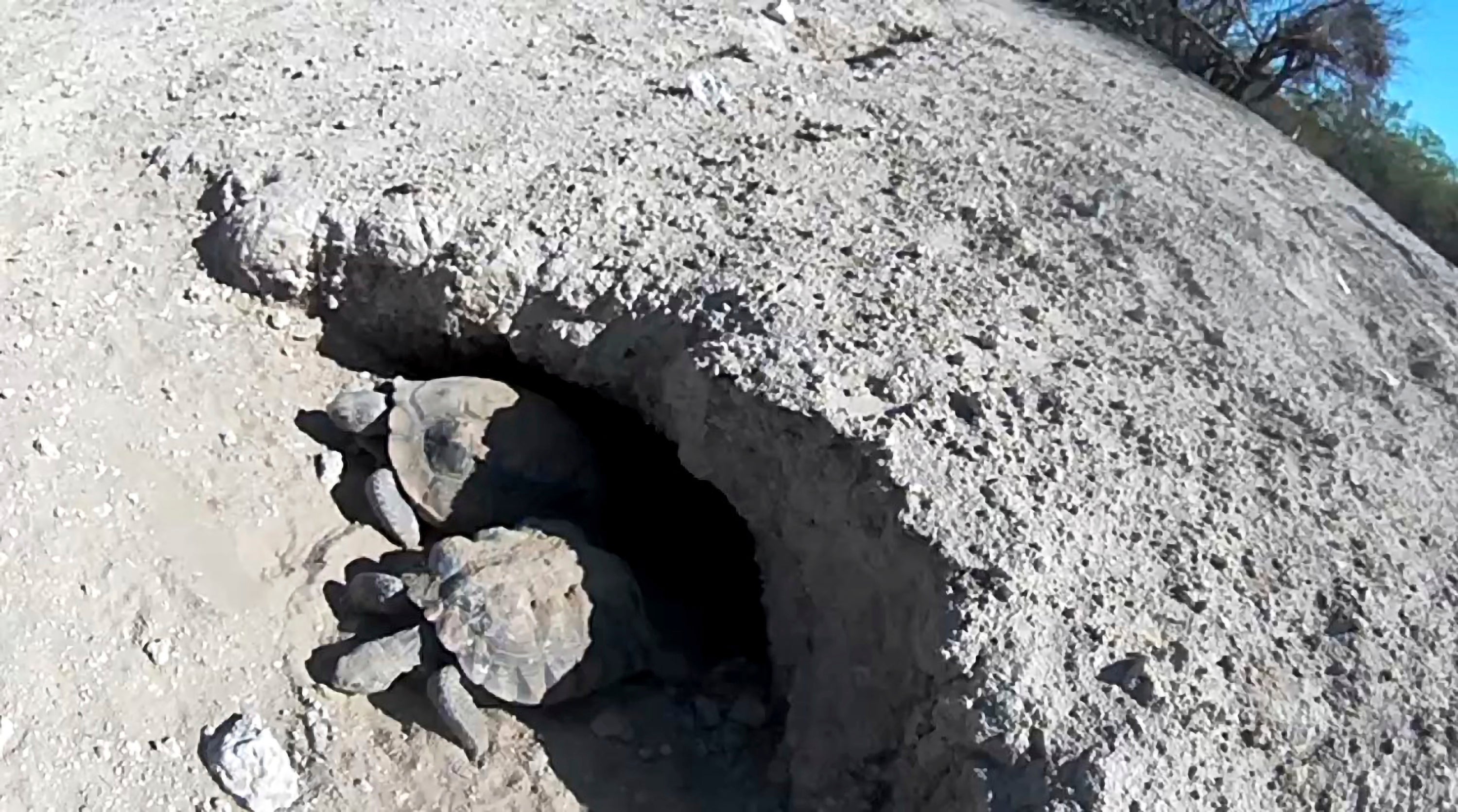'Mojave Max' tortoise emerges in Vegas; latest since 2000
Officials in Nevada say a desert tortoise that is the focus of schoolchild predictions and local lore about the start of spring has emerged from its winter burrow at a nature preserve in Las Vegas

Your support helps us to tell the story
From reproductive rights to climate change to Big Tech, The Independent is on the ground when the story is developing. Whether it's investigating the financials of Elon Musk's pro-Trump PAC or producing our latest documentary, 'The A Word', which shines a light on the American women fighting for reproductive rights, we know how important it is to parse out the facts from the messaging.
At such a critical moment in US history, we need reporters on the ground. Your donation allows us to keep sending journalists to speak to both sides of the story.
The Independent is trusted by Americans across the entire political spectrum. And unlike many other quality news outlets, we choose not to lock Americans out of our reporting and analysis with paywalls. We believe quality journalism should be available to everyone, paid for by those who can afford it.
Your support makes all the difference.A desert tortoise that is the focus of schoolchild predictions and local lore about the start of spring has emerged from its winter burrow at a nature preserve in Las Vegas, officials said Tuesday.
Mojave Max's appearance above ground with a burrow-mate at 3:40 p.m. Monday at the Springs Preserve marked the latest date since an annual watch contest began in 2000 for the critter compared locally with Punxsutawney Phil in Pennsylvania. Phil's handlers said Feb. 2 that their groundhog predicted their spring wouldn't arrive until April.
In Las Vegas, where the threatened species' reptilian winter rest is called brumation, the earliest a Mojave Max has emerged since 2000 was a little before noon on Feb. 14, 2005. The latest had been April 17, 2012.
Three male tortoises have borne the moniker Mojave Max. Today's Max is marked with a radio transmitting device attached to his shell. The tortoise seen with Mojave Max on Monday does not have a name.
Biologists at the Springs Preserve think this year's exceptionally cold winter that brought frequent rain and abundant snow to mountains in the West also kept the desert surface cool later into the spring, preserve spokesman Tom Bradley Jr. said Tuesday.
“It's taken longer for the soil in the burrow to warm,” Bradley said. “Once it finally warmed up, Max came out.”
The desert tortoise is considered a keystone species and an indicator of the health of a fragile desert ecosystem.
The habits and habitat of Mojave Max are studied by children at Clark County public and private schools, where officials say more than 4,200 students in grades K-5 entered this year's contest to guess the day the tortoise would emerge. Officials said a winner of the 23rd annual contest will be announced soon.